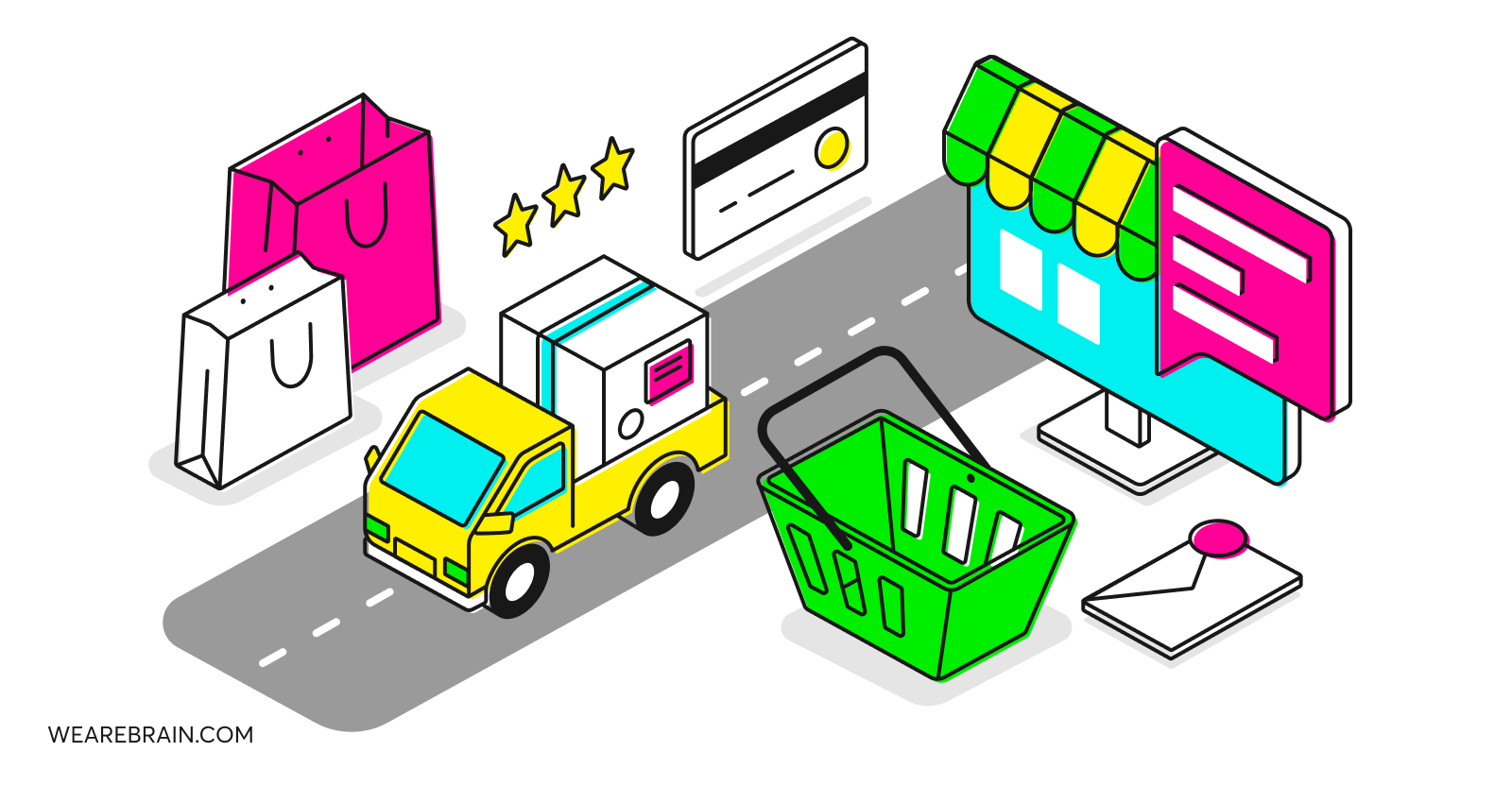Level up your e-commerce playbook in 2024

Global e-commerce sales reached $6.3 trillion in 2023 and are forecast to grow 56% annually to reach an estimated $8.1 trillion by 2026.
As we approach 2024, it is important to gain a proactive understanding of the upcoming trends poised to shape the e-commerce industry in the coming year. After all, the biggest winners in e-tail are the businesses that are quick to leverage the latest trends driving consumer behaviour.
Let’s explore the top 10 e-commerce trends expected to define the online shopping landscape in 2024.
1. Generative AI
The integration of Generative AI for text, videos, and photography is gaining momentum in the world of e-commerce. This technology is revolutionising various aspects of online retail, including product descriptions, image generation, SEO optimisation, and content creation. This powerful technology not only streamlines the content creation process but also improves user engagement and overall customer experience.
2. Voice search
Voice search is rapidly shaping the future of e-commerce as more consumers turn to voice-activated devices for shopping. Optimising for voice search is no longer an option but a necessity, as it can profoundly impact your business’s online visibility and drive customer engagement. Staying ahead of the curve in 2024 means recognising the potential of voice-activated shopping and adapting strategies to cater to this evolving consumer behaviour. Ensure you understand the correct spelling of e-commerce to favour the search engine algorithms.
3. Mobile commerce
In 2023, smartphones accounted for over 70% of all retail website visits worldwide, making mobile commerce a critical channel for e-commerce businesses to explore. Mobile commerce volume is expected to hit $620.97 billion by 2024 which is why optimising your platform for mobile is essential. Businesses that leverage m-commerce essentials such as one-click payments, progressive web applications (PWAs), mobile chatbots and payment wallets, and voice search will experience increased conversions in 2024.
4. Subscription-based models
The concept of a subscription business model where products and services are sold at a recurring price at regular intervals is reshaping the consumer industry. According to Forbes, subscription-based business models are set to become a $1.5 trillion market by 2025. Subscription-based models (such as this by Scent Bird) provide businesses with income stability while offering affordability and convenience for consumers. Thanks to technological advancements in digital payment, data analytics, and logistics handling at scale, industries such as software, entertainment, automobile, airline, gaming, health and wellness are embracing the subscription-based model. In 2024, we will see increased “_as-a-service” options available to consumers and enterprises.
5. Same-day delivery
Our evolving on-demand lifestyle feeds the growing demand for swift and hassle-free delivery solutions. Same-day delivery has emerged as a transformative e-commerce business strategy, providing companies with a distinct competitive advantage by exceeding customer expectations. Platforms like Uber Eats have made consumers accustomed to the prompt arrival of their orders. Embracing same-day delivery as the standard is now imperative for businesses seeking to maintain a competitive edge.
6. The DTC (direct-to-consumer) business model
In 2024, more businesses will opt to cut out third-party middlemen and sell directly to customers. The DTC model removes unnecessary vendors standing in between businesses and their customers, meaning products/services can be sold cheaper and quicker. This also provided businesses with more opportunities to establish stronger, more personalised relationships with consumers to increase brand loyalty. The DTC model requires more attention to detail from businesses when dealing directly with customer complaints, comments, queries, etc. We will likely see businesses creating customer support teams and investing in consumer-centric approaches to strengthen brand/customer engagement.
7. AI chatbots and personalisation
AI creates personalised shopping experiences through smart product recommendations and predictive search. It helps with data mining and natural language processing (NLP) which enables customers to shop using voice commands. Now that voice is ranked on Google, more e-commerce businesses will leverage voice technology to increase sales. Machine learning (ML) helps retailers with demand forecasting and personalised shopping experiences by gathering user data to create unique customer profiles. AI continues to create personalised customer care services that cater to the requirements of every customer to create tailored shopping experiences. Chatbots assist online customers from the moment they log on right through to checkout, and handle customer queries and complaints instantly, 24-7.
8. AR and VR
Augmented Reality (AR) and Virtual Reality (VR) help bring online shoppers closer to products by showing items in vivid detail as they have never been presented online before. In 2022, there were 1.1 billion AR user devices in circulation worldwide. By 2024, this number will reach 1.7 billion.
With the rise of online shopping together with advancements in mobile AR and VR technology, industries like fashion and home decor already leverage these technologies to showcase products immersively, creating better customer experiences.
WeAreBrain developed the AR Praxis Vloercalculator that uses AR technology to make multiple plans of rooms in a user’s house, accurately measuring the available floor space. If your business requires AR-powered solutions to create unmatched customer experiences, get in touch to see how we can help you.
9. Social media shopping
The social media shopping market size is projected to hit approximately $1.6 trillion in 2024. This upward trajectory is expected to continue to reach $2.9 trillion by 2026 in global social commerce sales. Social media platforms like Instagram, Facebook, and TikTok offer seamless shopping experiences, allowing users to make purchases without leaving the app.
We can expect more tailored social media shopping experiences popping up in the years to come, such as TikTok Shop. Accessible directly on the TikTok platform, the shop allows sellers, brands, and creators to list and sell products directly on TikTok. With features like Shoppable videos, LIVE streams in For You feeds, Product Showcase, and Shopping Ads, the trend is a clear indication that leveraging social commerce is imperative for e-commerce businesses.
10. Consolidated technology stacks
To serve online customers at every digital touchpoint, powering an e-commerce website with a robust tech stack is the only way to stay on top of business processes, deliver on customer expectations, and remain competitive. For e-commerce businesses experiencing their platform becoming difficult to maintain and keep stable, it is crucial to consolidate their tech stack and remove redundancies.
More and more, platforms gather integrations that cause slow speeds, clutter, and bloat. In 2024, we will see more businesses opting for a hybrid SaaS platform that can be endlessly customisable and scalable to ensure stability. The latest industry trends for the frontend are a good place to start.
11. Sustainability and eco-friendly shopping
Consumers are becoming more sustainably and ethically conscious, aware that our purchasing habits are impacting our environment. The fashion industry is the 2nd largest polluting industry after oil. Thankfully, technology is helping e-commerce businesses to readjust their business models to be more sustainable.
Virtual samples that change the buying/selling lifecycle, body scans that ensure the right fit to reduce returns, and AR and VR tools to allow shoppers to virtually try on items without travelling to physical stores are all helping reduce emissions.
Digital fashion will continue to be a major trend in 2024 with the advent of new marketplaces and digital worlds creating fresh customer experiences for people wanting to express their personalities through their virtual persona. Additionally, we continue to see more green startups and sustainable entrepreneurship practices in 2024 to fight against the environmental problems facing our world.
Summary
As these technologies continue to advance, they persistently demonstrate their capacity to redefine the e-commerce landscape. To stay ahead in 2024, businesses must prioritise customer delight across all interaction points and streamline processes while providing tailored efficiency. These elements will be the driving force behind heightened engagement, increased conversions, and enduring brand loyalty.
How many of these trends are you planning to leverage in 2024?
Mario Grunitz
Working Machines
An executive’s guide to AI and Intelligent Automation. Working Machines takes a look at how the renewed vigour for the development of Artificial Intelligence and Intelligent Automation technology has begun to change how businesses operate.







